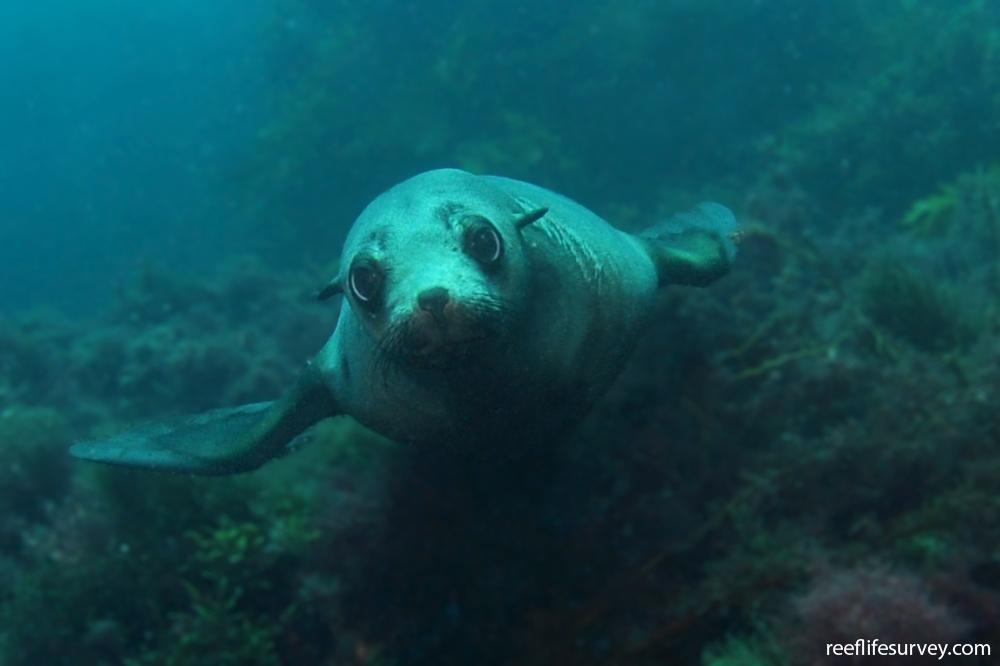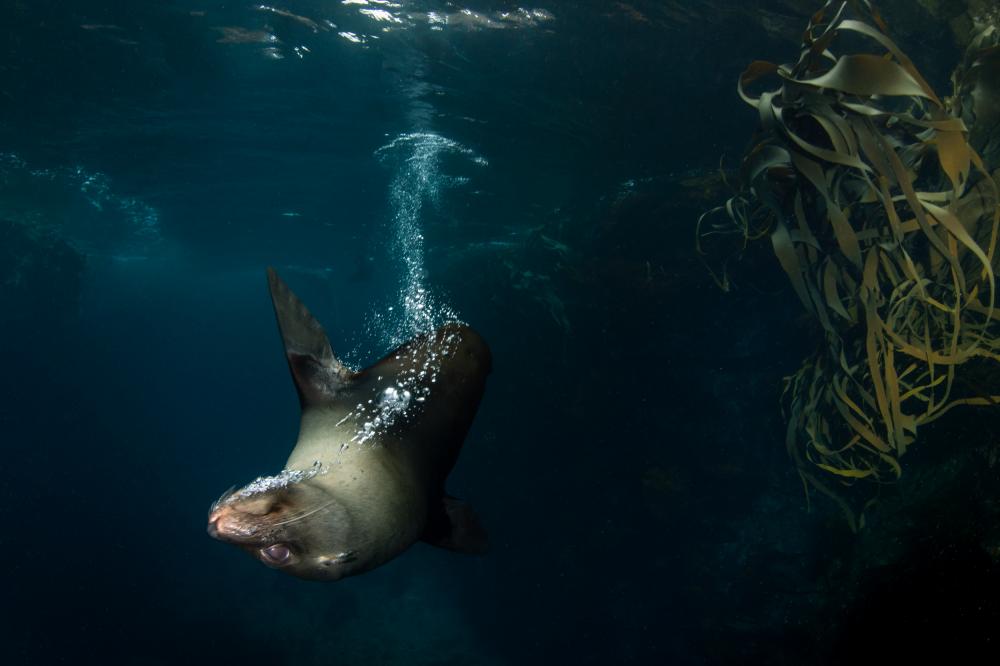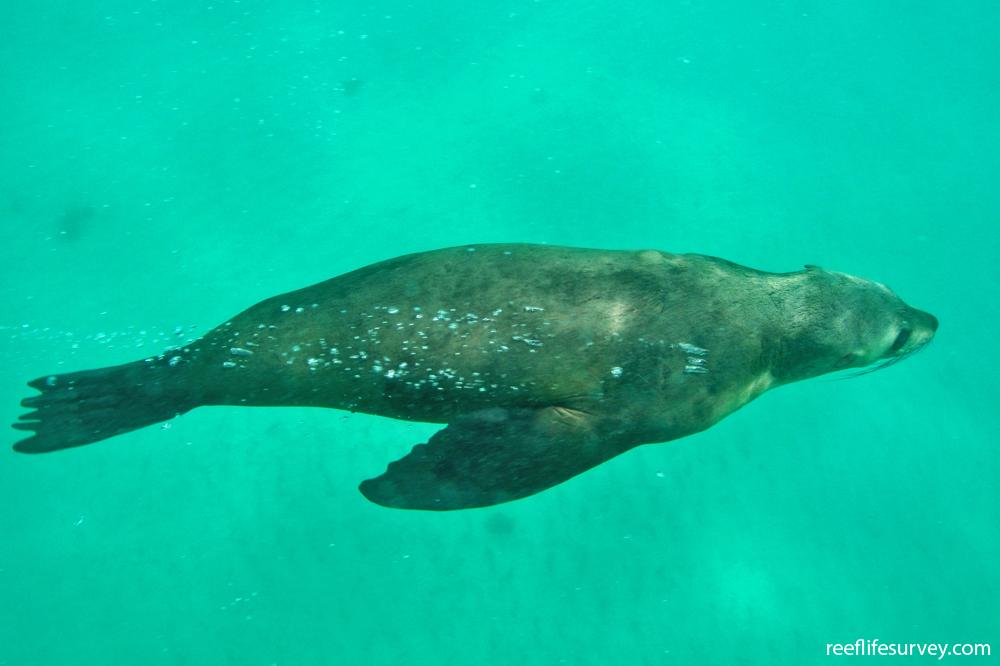Arctocephalus pusillus
Australian fur sealSame Genus
Distribution
Temperate Africa, Temperate Australasia
Description
It is virtually identical in appearance to the New Zealand fur seal, but differs in tooth structure, as it has large teeth with three cusps rather than the small teeth with one cusp of its relative. The Australian fur seal also differs in breeding habitat, as it prefers exposed rocky shores rather than the sheltered boulder beaches used by the New Zealand fur seal. Birth and mating occur in November and December, with pups reaching maturity after four to five years, and rarely surviving for longer than 10 years. The species is a good climber on rocks and an excellent swimmer, reaching depths over 130 m while searching for fish and large invertebrate prey. The population of this species was almost eliminated by sealers hunting for pelts in the early 19th century but now numbers about 25,000 animals.
Information
Max Size: 230 cm
Sea Temperature Range: 12.1-22.6°C
Depth: N/A
Habitat Generalization Index: N/A
Also referred to as the SGI (Species Generalisation Index), this describes the habitat niche breadth of the species. Species with values less than 15 are found in a relatively narrow range of reef habitat types (specialists), while those over 25 may be found on most hard substrates within their range (generalists). Learn more here.
Conservation and Rarity
IUCN Status: Least Concern
Occurrence: Infrequent (4.0% of sites)
Occurrence describes how often the species is found on surveys within its distribution. It is calculated as the % of reef sites surveyed by RLS divers across all the ecoregions in which the species has been observed
Abundance: Few (3 per transect)
Abundance is calculated as the average number of individuals recorded per RLS transect, where present.
Edit by: GJ Edgar. 2008. Australian Marine Life. New Holland, Sydney











